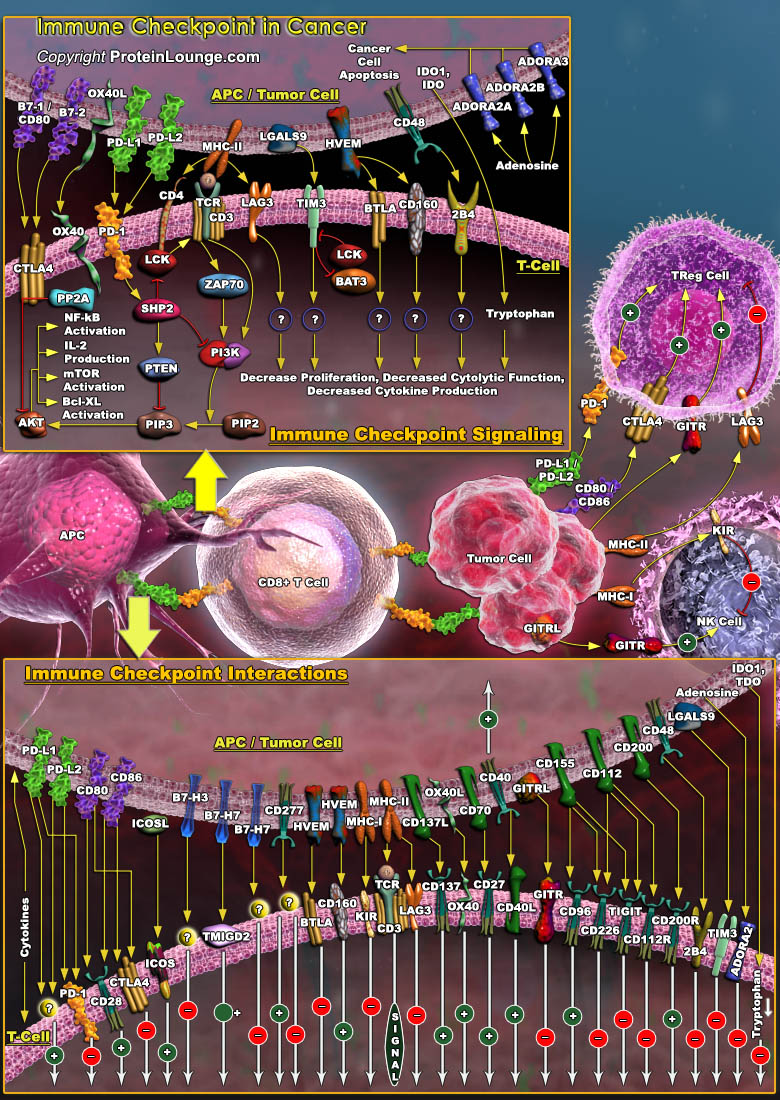
Immune checkpoints are co-stimulatory or inhibitory molecules that serve as regulators of T cells function in the tumor microenvironment. Inhibitory immune checkpoints maintain immune homeostasis, down-regulate anti-tumor responses and prevent autoimmunity (Ref.1). Checkpoint pathways involve costimulatory and inhibitory receptors and their ligands. Costimulatory receptors include CD28 and ICOS (inducible T cell co-stimulator), 4-1BB, OX40, CD27, CD30, CD40, GITR (glucocorticoid inducible TNF receptor-related protein), and HVEM (herpes-virus entry mediator), whereas co-inhibitory receptors include CTLA4, Programmed Death-1 (PD-1), BTLA (B and T lymphocyte attenuator), lymphocyte activation gene-3 (LAG-3), TIM3 (T cell immunoglobulin and mucin domain-containing protein[..]
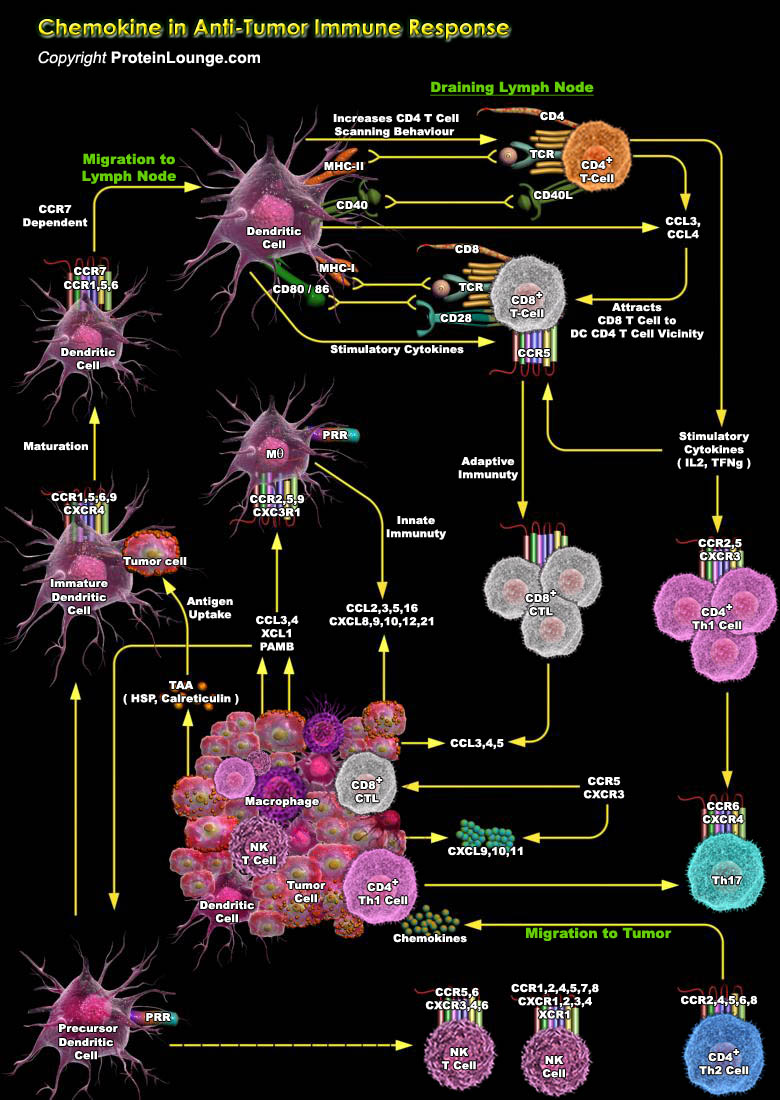
Chemokines are chemotactic cytokines belonging to a large family of small, secreted proteins that stimulate the cells migration and the positioning and interactions of cells within tissue. About 50 endogeneous chemokine ligands and 20 cell surface G protein-coupled heptahelicalchemokine receptors together form the chemokine superfamily. Chemokines regulate leukocyte migration into the tumor microenvironment and thus play important roles in deciding tumor fate, promoting anti-tumor immune responses, or sustaining tumor growth, angiogenesis and metastasis (Ref.1).Chemokines mediate anti-tumor activities through inhibition of angiogenesis and attraction of immune effector cells to the tumor site. Major immune cells that are recruited to the tumor microenvironment (TME)[..]
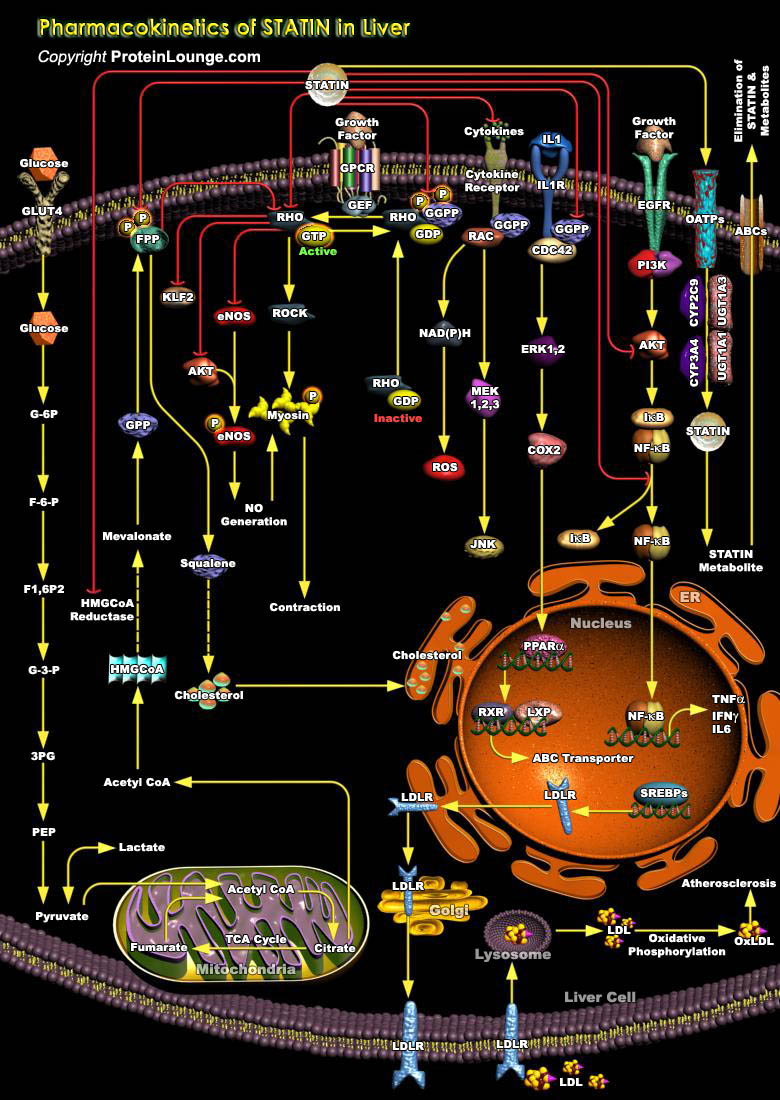
Cholesterol is the key component of the structure and function of cell membranes and is biosynthesized by all animal cells. Cholesterol biosynthesis occurs in the liver and the intestines. The liver has two sources of cholesterol either it can take up LDL particles from the blood, or it can synthesis cholesterol using HMG-CoA reductase adding to the cholesterol pool in the liver cell. Cholesterol, owing to their hydrophilic structure are packed within lipoproteins for intra cellular transport. Several types of lipoproteins are present in the blood varying in density. They are very low density lipoprotein (VLDL), intermediate density lipoprotein (IDL), low-density lipoprotein (LDL), and high-density[..]
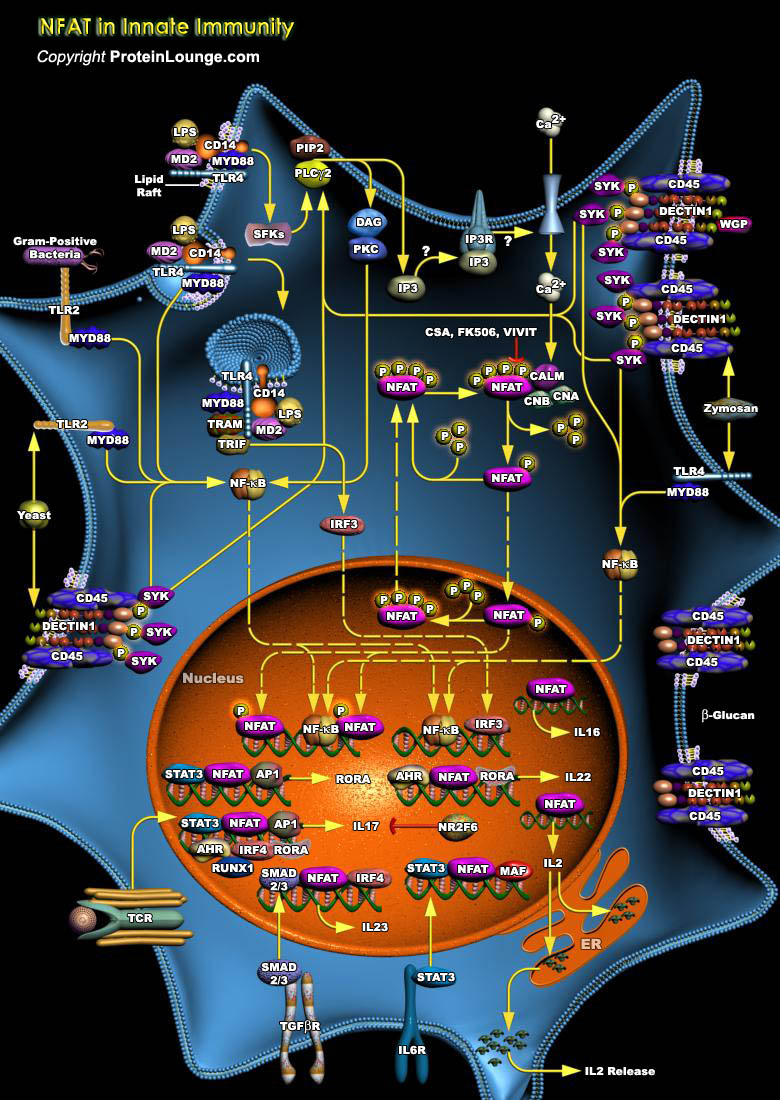
NFATs are basically calcium-dependent transcription factors, activated by stimulation of receptors coupled to calcium/calcineurin signals, such as the antigen receptors on T-Cells and B-Cells, FcEpsilonR (Fc-Epsilon Receptors) on mast cells and basophils, the Fc-Gamma receptors on macrophages and NK cells, the platelet collagen receptors, and receptors coupled to heterotrimeric G-Proteins (Ref.1). NFATs serve to couple gene expression to changes in intracellular calcium levels and are regulated primarily at the level of their subcellular localization. In response to antigen receptor signaling, the calcium-regulated phosphatase, calcineurin acts to directly dephosphorylate NFAT proteins, causing their rapid translocation from the cytoplasm to the nucleus, where they[..]
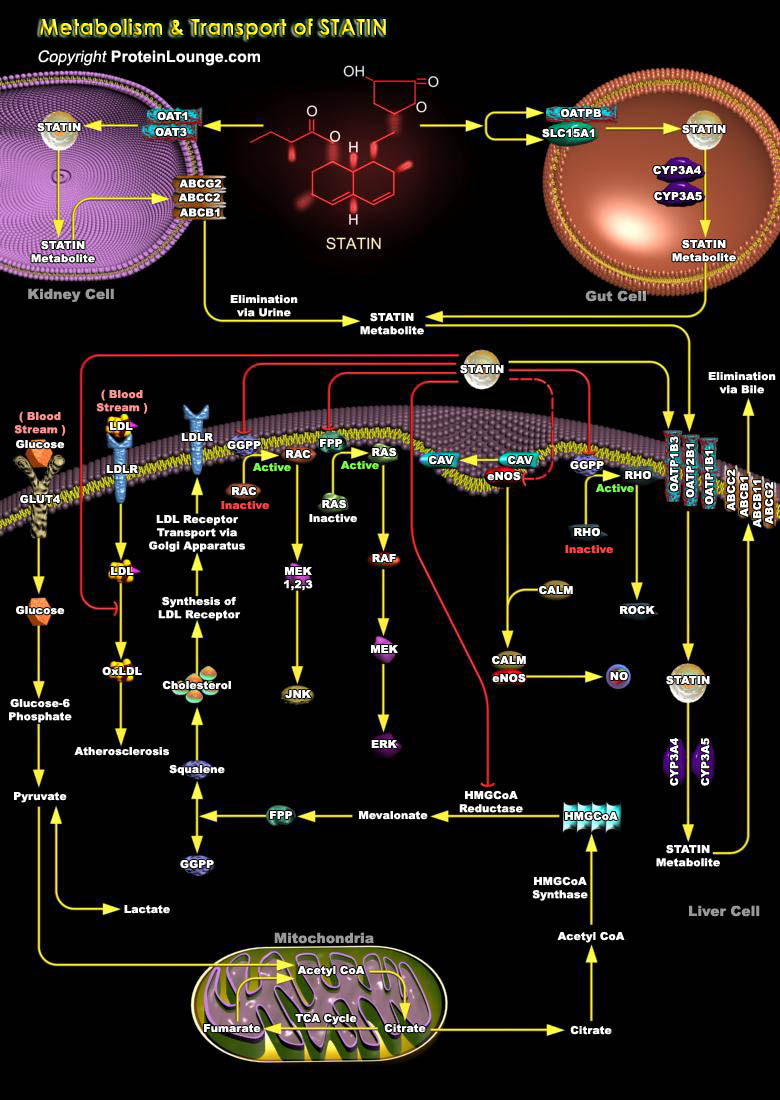
Cholesterol is an important structural component of cell membranes. They not only act as precursor of steroid hormones, bile acids and vitamin D but are essential for posttranslational modification of membrane proteins involved in cellular processes such as cell growth/differentiation, gene expression, and protein glycosylation and cytoskeletal assembly. Cholesterol biosynthesis occurs in the cytoplasm and endoplasmic reticulum of liver and intestine and is strictly regulated by the Mevalonate Pathway. Cholesterol biosynthesis is initiated with the synthesis of 3-hydroxy-3-methylglutaryl-CoA (HMG)-CoA from Acetyl-CoA through Acetoacetyl CoA. 3-hydroxy-3-methylglutaryl-CoA reductase (HMG CoA reductase) the rate-limiting enzyme catalyzes the conversion of HMG-CoA to[..]
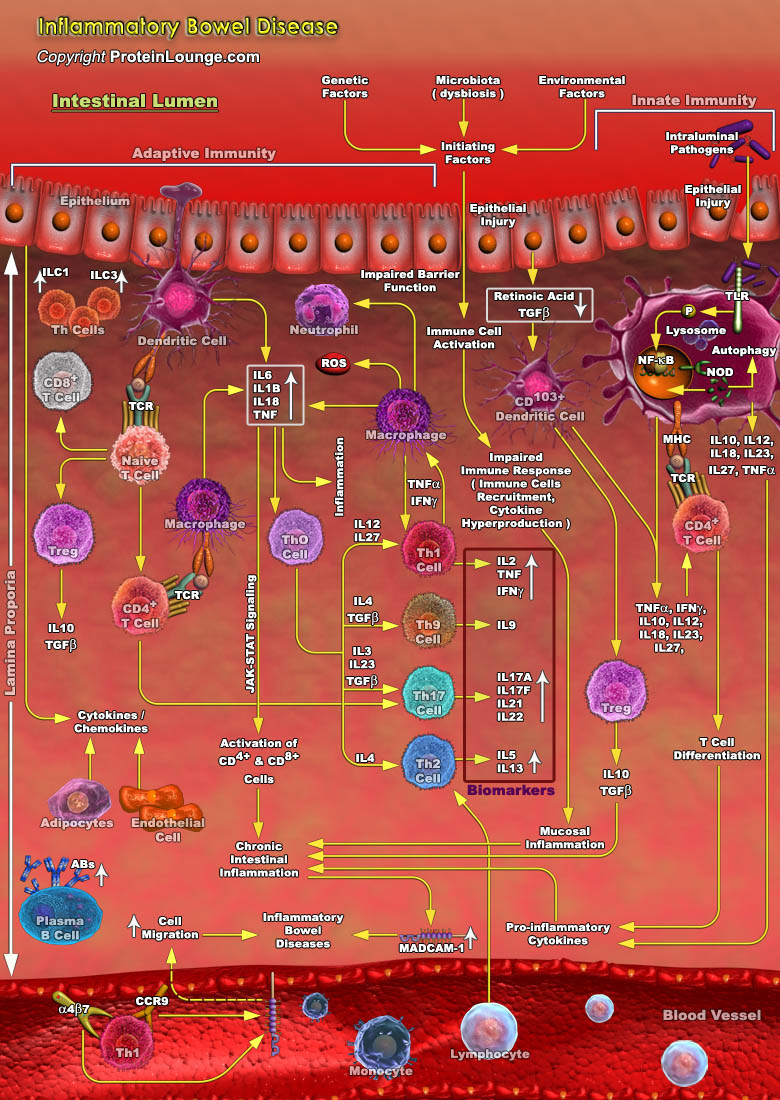
The gastrointestinal (GI) tract plays a central role in maintaining immune homeostasis, i.e., tolerance to non-pathogenic commensal bacteria, self-antigens, and food antigens, while also protecting the host against pathogenic organisms by mounting an inflammatory response. The fine line between tolerance and inflammation of the GI immune system, when disrupted, may result in diseases such as inflammatory bowel disease (IBD). IBD is a chronic inflammatory disorder of the GI tract, it is defined into two major subtypes, Crohn’s disease (CD) and ulcerative colitis (UC) (Ref. 1 & 2).The overactive mucosal immune response against gut microorganisms in genetically susceptible individuals is thought to have major impact in the development and pathophysiology of IBD.[..]
.jpg)
Chronic lymphocytic leukemia (CLL) is a type of cancer of the blood and bone marrow in which the bone marrow makes too many lymphocytes. This is a type of slow-growing leukaemia that affects developing B-lymphocytes. CLL is a malignancy of mature CD5+ B-cells that is characterized by apoptosis resistance and dysfunctional immune system. Within a complex cellular network in bone marrow and secondary lymphoid organs (SLOs), T-cells represent a key cell type in the CLL microenvironment that considerably expands along with disease course. In people with CLL, lymphocytes undergo a malignant (cancerous) change and become leukaemic cells. CLL remains stable for many months and years and has little, impact on their lifestyle or general health. Around 30-50% of people diagnosed[..]
 & Interaction with Environment.jpg)
Chronic lymphocytic leukemia (CLL) is a type of cancer of the blood and bone marrow in which the bone marrow makes too many lymphocytes. This is a prototypic malignancy that not only depends on intrinsic genetic defects, but also depends on the interactions with cells present in microenvironment such as T cells, monocyte-derived cells (MDC), and stromal cells (such as endothelial cells, fibroblastic reticular cells, and pericytes). Signals emanating from the microenvironment plays a significant role in supporting CLL cell proliferation and survival, as well as facilitating chemoresistance, cell proliferation, and migration. Tissue stromal cells, such as stromal cells and monocytederived nurselike cells (NLC) are critical elements of the tissue microenvironment in CLL,[..]
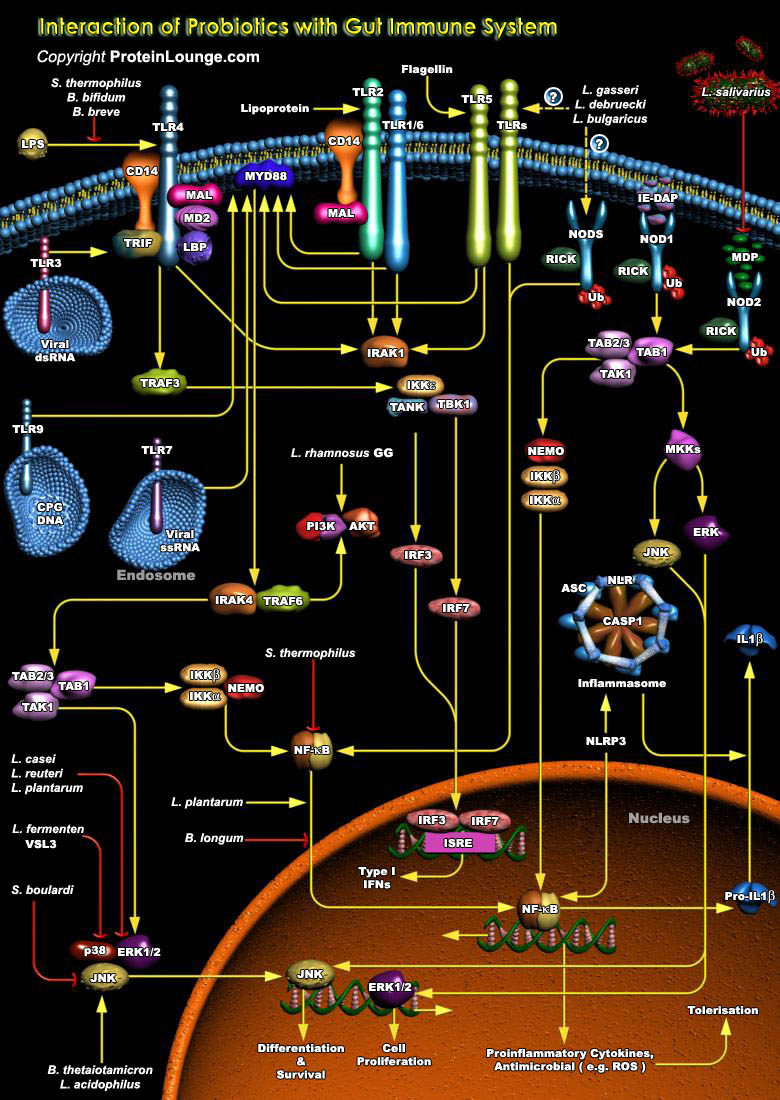
The immune response is initiated by innate immunity following exposure to foreign substances or tissue injury. Innate immunity exerts protective roles in host homeostasis in part by priming adaptive immune responses against persisting insults and inducing inflammation. However, the unbalanced immune response leads to severe inflammation and uncontrolled tissue damage and disease. Sensing of the intestinal microbiota by the host mucosal immune system plays significant roles in maintaining intestinal homeostasis and inducing systemic protective responses. Thus, manipulation of the intestinal microbiota is a potential alternative approach for maintaining health and preventing and/or treating diseases. Probiotics were defined as ‘live microorganisms which, when[..]
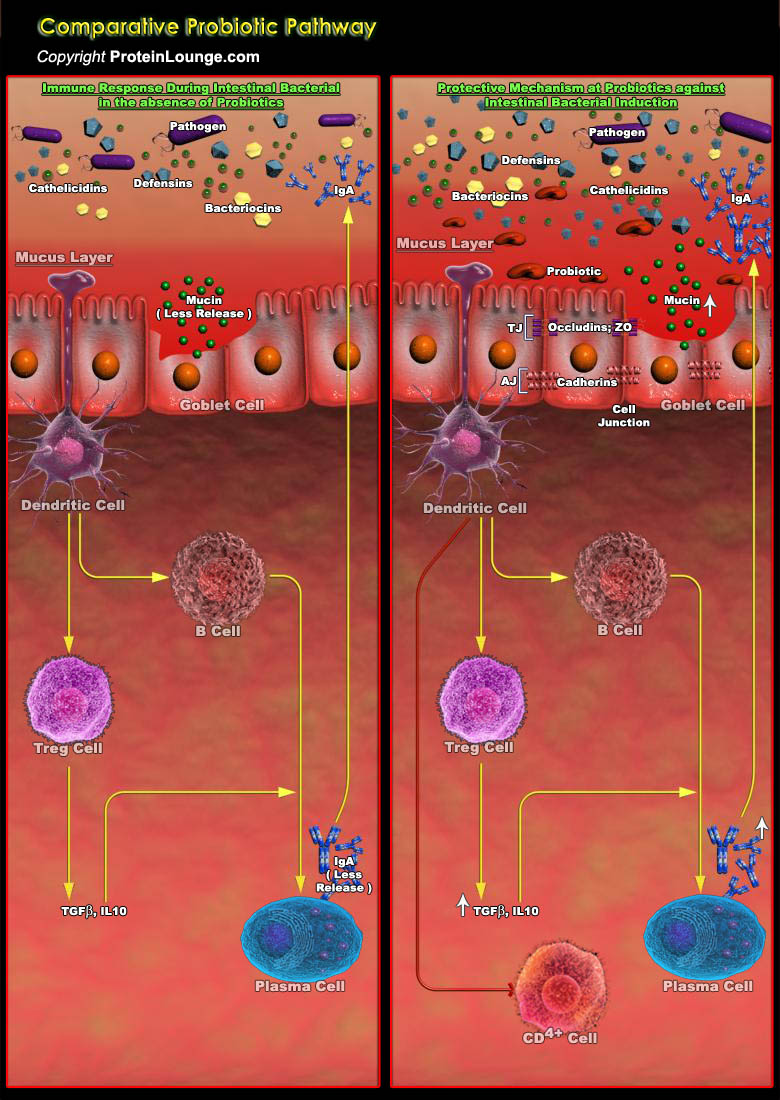
Probiotics are living microorganisms that confer health benefits to the host when administered in adequate amounts; however, dead bacteria and their components also exhibit probiotic properties. Bifidobacterium and strains of lactic acid bacteria are the most widely used bacteria that exhibit probiotic properties and are included in many functional foods and dietary supplements (Ref.1&2).During intestinal bacterial infection, there is colonization of the gut epithelium by the pathogen. The mucus produced by goblet cells accounts as one of the first lines of defense against pathogenic bacteria colonization and the intestinal cells produce antimicrobial peptides (cathelicidins and defensins) in order to contain the infection. Cathelicidins are small, cationic,[..]
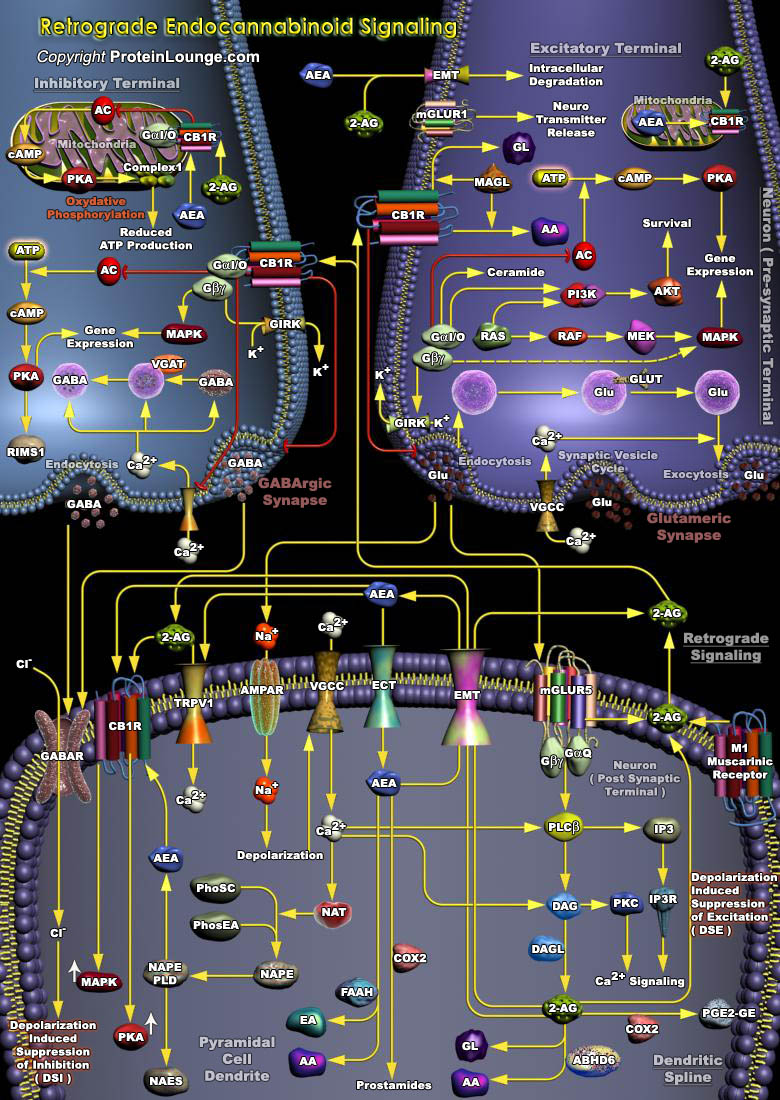
Endocannabinoids are endogenous ligands of cannabinoid receptors that bind as the principal biologically active component of Cannabis sativa, D9-tetrahydrocannabinol (D9-THC), and also comprise amides, esters and ethers of long chain polyunsaturated fatty acids. Endogenous cannabinoids (endocannabinoids) serve as retrograde messengers at synapses in various regions of the brain. The endocannabinoid system (ECS) is a neuromodulatory system that plays important role in central nervous system (CNS) development, synaptic plasticity and in cancer pathogenesis as tumor promoters. The endocannabinoid system consists of endocannabinoids (major derivative include arachydonoyl ethanolamide (anandamide, AEA) and 2-arachydonoil glycerol (2AG)), their G-protein-coupled receptors[..]
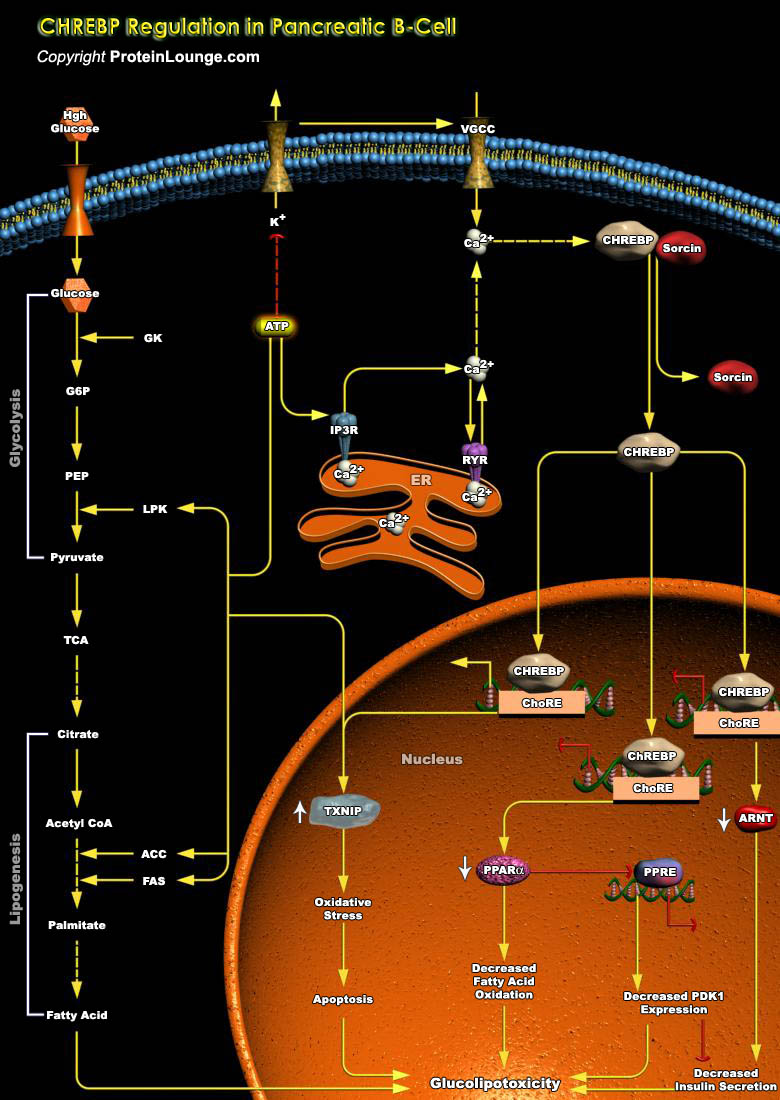
CHREBP (Carbohydrate-response element-binding protein) is the major transcription factor conferring glucose-induced gene expression in pancreatic islets, liver and adipose tissue. To date, only two natural isoforms, CHREBPα and CHREBPβ, have been identified. CHREBP-β was identified in adipose tissue and found to be also expressed in islets and involved in glucose-induced beta cell proliferation. In adult pancreatic β cells, CHREBP activity is regulated by its cytosolic/nuclear localization (Ref.1&2).Chronic hyperglycemia, the hallmark of type 1 and T2D, can cause damage to numerous cell types, including pancreatic β cells. Although under physiological conditions an increase in glucose metabolism stimulates insulin secretion,[..]

